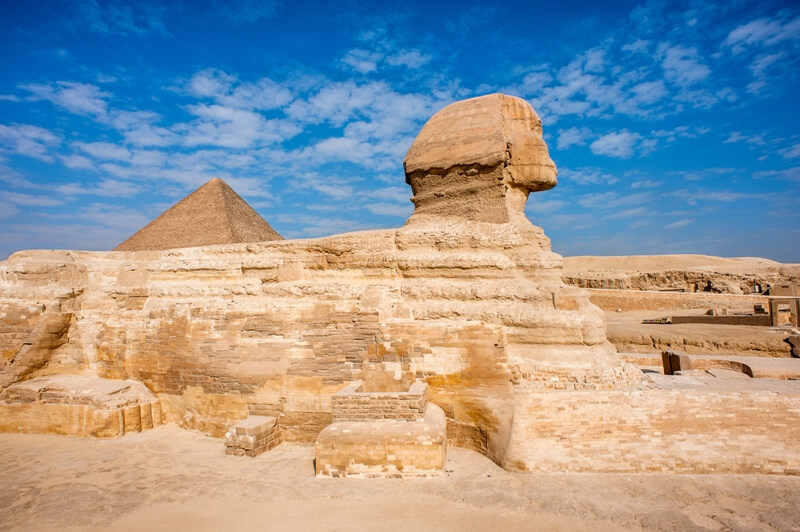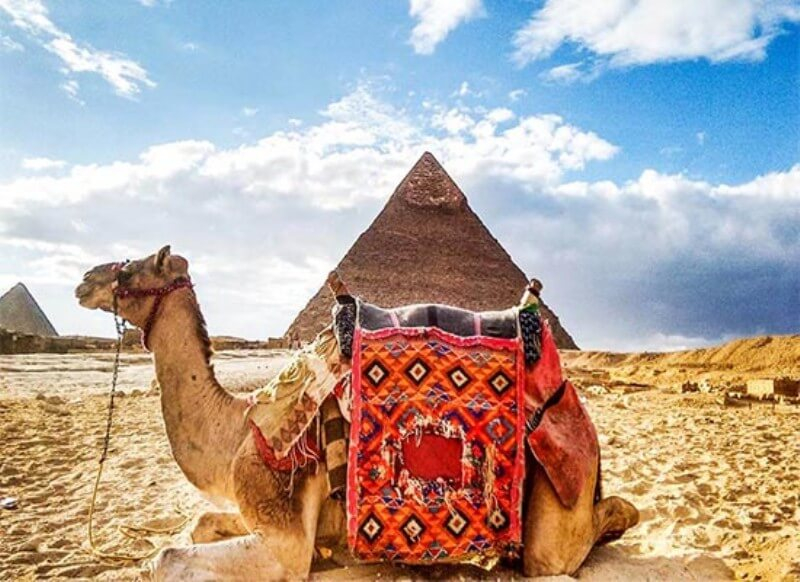For thousands of years, the Great Pyramids of Giza have been shrouded in mystery and intrigue. Standing tall against the backdrop of the Egyptian desert, the pyramids of Giza have captivated the imagination of adventurers and scholars alike. From their majestic size and remarkable engineering feats to their mysterious inscriptions and unknown origins, the Giza Pyramids remain a source of fascination and wonder. Now, the secrets of the Giza Pyramids are within reach. By exploring the long-hidden mysteries of the Giza Pyramids, we can unlock the secrets of the ancient Egyptians and gain insight into their culture, beliefs, and technology. Join us as we embark on a journey of discovery to unlock the secrets of the Giza Pyramids and explore the ancient mysteries that have captivated us for centuries.
History of the Giza Pyramids
The Great Pyramids of Giza are among the oldest and most mysterious monuments in the world. Dating back to the Old Kingdom of Egypt, they were built over 4,500 years ago and were the first of their kind. While much of their history has been lost, it is believed that the pyramids were built as tombs for Pharaohs, and may have been used as astronomical observatories.
The Great Pyramid of Giza is the oldest and largest of the three pyramids. It was built by Pharaoh Khufu, and is believed to have taken around 20 years to build. The pyramid stands at an impressive 481 feet tall and is made of over 2 million limestone blocks, each weighing around 2.5 tons.
The second and third pyramids were built by Pharaohs Khafre and Menkaure, respectively. While not as large as the Great Pyramid, these structures are still impressive in their own right. The second pyramid is 471 feet tall, while the third is only 218 feet tall.
The three pyramids of Giza are surrounded by several smaller pyramids, known as the Queen's Pyramids. These are believed to have been built for the Pharaoh's wives or daughters.
Uncovering the Mysteries of the Giza Pyramids
The majority of pyramids were constructed on the western side of the Nile and they embody an incredible level of accuracy. A major enigma regarding the Egyptian pyramids is how they were constructed. It is an incredible accomplishment that the Egyptians used in excess of 2 million blocks of limestone and granite to construct the Great Pyramid of Giza. While the precise procedure for constructing this architectural wonder is not exactly known, the most accepted notion is that the Egyptians surrounded the pyramid with a mound of sand, brick, and earth that was continually raised as the pyramid grew taller..
In 2017, researchers utilized particle physics to gain an inside look. What they found was a concealed universe that contained secret compartments and chambers that were unforeseen. One of the biggest revelations was an immense empty space that stretched out almost 100 feet, located right above the pyramid's grand gallery..
For centuries, secret doors and chambers have been found in structures such as ancient Egyptian pyramids. This was done to protect the goods of the royalty, who planned on taking them with them to the afterlife. It is said that all of the pyramids were once dressed with a glossy limestone, however most of the stones have been removed and used in other constructions. Khafre's pyramid, though, still has a few of those stones on its peak.
An immense array of caverns, rooms, and passageways has been discovered beneath the Pyramids of Giza, according to a British adventurer who claims to have found the forgotten underground of the pharaohs. A habitat to bats and dangerous spiders, the subterranean complex was identified in the limestone foundation beneath the pyramid area at Giza
.

The Great Sphinx and the Pyramids of Giza
The Great Sphinx of Giza is another mysterious monument that stands alongside the pyramids. The Sphinx is a large stone statue of a lion with the head of a Pharaoh. It is believed to have been built by Pharaoh Khafre and is thought to be around 4,500 years old.
The Great Sphinx is an iconic monument, and its purpose and origins remain a source of speculation. While some scholars believe that the Sphinx was built to guard the pyramids, others believe that it was built to represent the Pharaoh's power and authority.
In addition to the Great Sphinx, there are several other monuments and structures at the Giza complex. These include the Valley Temple, the Solar Boat Museum, and the Great Pyramid of Khufu.
Symbology and Hieroglyphics of the Giza Pyramids
The hieroglyphics and symbols found within the Giza Pyramids have long puzzled scholars and adventurers. Many of the symbols and inscriptions are believed to represent the beliefs of the ancient Egyptians, and some believe that they may hold the key to unlocking the secrets of the pyramids.
The hieroglyphics and symbols found within the Giza Pyramids are believed to represent the gods of the ancient Egyptians, as well as their beliefs about the afterlife and the power of the Pharaohs. In addition, the symbols are believed to represent the power of the Pharaohs and their connection to the gods.
The hieroglyphics and symbols also suggest that the pyramids were built to align with the stars and planets. This suggests that the ancient Egyptians had a sophisticated understanding of astronomy and that the pyramids may have been used as astronomical observatories.
The Astronomical Aspects of the Giza Pyramids
The alignment of the Giza Pyramids with the stars and planets suggests that the ancient Egyptians had a sophisticated understanding of astronomy. While the exact purpose of the alignment is unknown, some believe that the pyramids were used to track the stars and planets.
In addition, the alignment of the pyramids may have been used to predict the flooding of the Nile River. This would have been a valuable tool for the ancient Egyptians, as the flooding of the Nile was essential for their agriculture.
The alignment of the pyramids also suggests that the ancient Egyptians had an understanding of mathematics and geometry. This is evidenced by the precise angles and measurements of the pyramids, which suggest that the Egyptians had mastered the use of geometry and trigonometry.
How Technology is Unlocking the Secrets of the Giza Pyramids
In recent years, technology has allowed us to gain a greater understanding of the Giza Pyramids. By using advanced imaging technology, researchers have been able to map the interior of the pyramids and uncover hidden chambers and passages.
Additionally, researchers have used data from satellites to gain a better understanding of the alignment of the pyramids and the stars and planets. This has provided us with valuable insight into the astronomical knowledge of the ancient Egyptians.
Finally, researchers have used computer simulations to gain a better understanding of the engineering feats that were necessary to build the pyramids. This has allowed us to gain a greater appreciation of the achievements of the ancient Egyptians.

Conclusion
The Great Pyramids of Giza remain a source of fascination and wonder. By exploring the mysteries of the Giza Pyramids, we can gain insight into the beliefs and technology of the ancient Egyptians. Furthermore, technology is allowing us to unlock the secrets of the Giza Pyramids and gain a greater understanding of the achievements of the ancient Egyptians. From their majestic size and remarkable engineering feats to their mysterious inscriptions and unknown origins, the Giza Pyramids will continue to captivate us for centuries to come